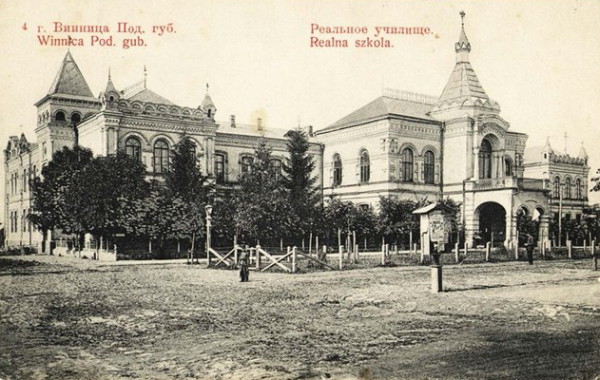Realschule
Realschule [реальне училище; realne uchylyshche]. A secondary school with a six- or seven-year program of study, established in imperial Russia by the conservative education minister Count Dmitrii Tolstoi’s Realschule Statute of 1872. The curriculum of the Realschule was pioneered in Western Europe. Emphasis was placed on natural sciences, modern languages, and the application of technical knowledge, whereas in gymnasiums emphasis was placed on Latin and Greek. Although there had been schools in Ukraine which provided practical training from the beginning of the 19th century, such as the Chernihiv Trade School (est 1804), it was not until 1864, when the Russian education minister, Count Golovnin, established the eight-year realgymnasium, that ‘real’ studies in imperial Russia were taught in an academic rather than a purely vocational context. In 1872 the classical education obtained at gymnasiums was made the only conduit to university. Realgymnasiums, which taught natural sciences and modern languages instead of Latin and Greek, were replaced by Realschulen. Social mobility through education was restricted, and the modern or ‘real’ curriculum was relegated to second-class status. Realschule students, more likely to be from the lower classes than their gymnasium counterparts, were considered politically volatile and given a narrowly technical education which barred them from entering university and many other postsecondary institutions. The drop-out rate in Realschulen was higher than that in gymnasiums, where a diploma promised academic advancement. In 1879, 20 percent of Realschule students dropped out, compared with 15 percent of gymnasium students. Central government funding of Realschule corresponded to their inferior status, and local zemstvos were compelled to provide much of the support. In 1885 there were 75 Realschulen in the European part of the Russian Empire, with 14,722 students; 19 of these schools and 4,345 of the students were in Ukraine.
In 1888 time devoted to vocational training in Realschulen was decreased, and a special grade was added to prepare students for specialized higher education. Realschule graduates were given the right to enter all postsecondary technical and agricultural institutes and the physics, mathematical, and medical faculties of universities. Commercial schools, established by the Ministry of Finance in 1896, began to rival Realschulen and gymnasiums. They offered a general education rather than a narrowly classical or vocational education, greater scope for local control, limited coeducation, and no class restrictions or quotas on the admission of Jews. By 1913–14, 51,632 students were enrolled in commercial schools, only 40 percent fewer than the 80,800 pupils of the more entrenched Realschulen, and a third as many as studied at boys' gymnasiums. In 1915 graduates of Realschulen were granted the right to enter all university faculties.
In Austrian-ruled Ukraine ‘real’ studies were taught in both realgymnasiums and Realschulen. Graduates of the eight-year realgymnasiums could enter any school of higher learning; graduates of the seven-year Realschule could enter all institutions of higher learning except universities. In 1906 there were 20 realgymnasiums and Realschulen in Galicia and Bukovyna.
After the October Revolution of 1917, Soviet education reforms abolished Realschulen.
Chrystia Freeland
[This article originally appeared in the Encyclopedia of Ukraine, vol. 4 (1993).]

